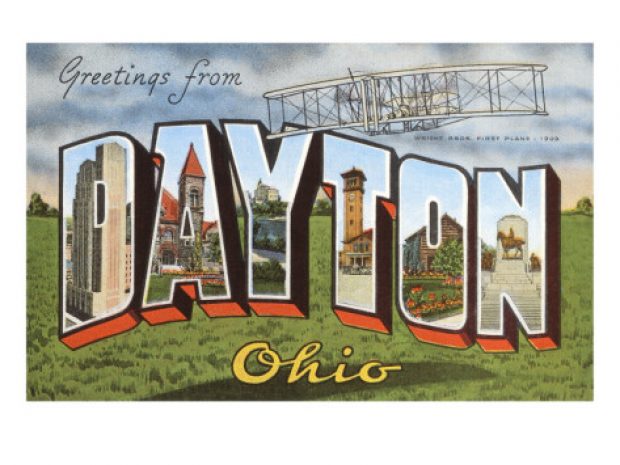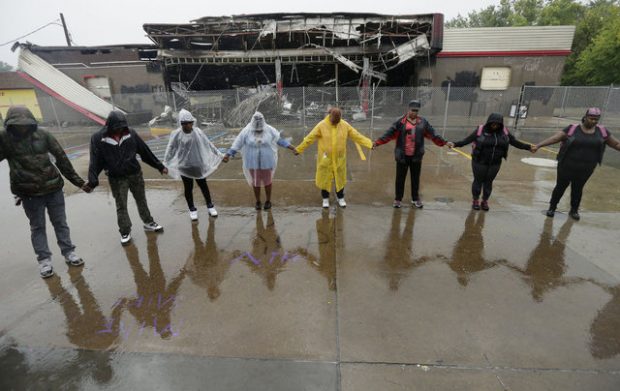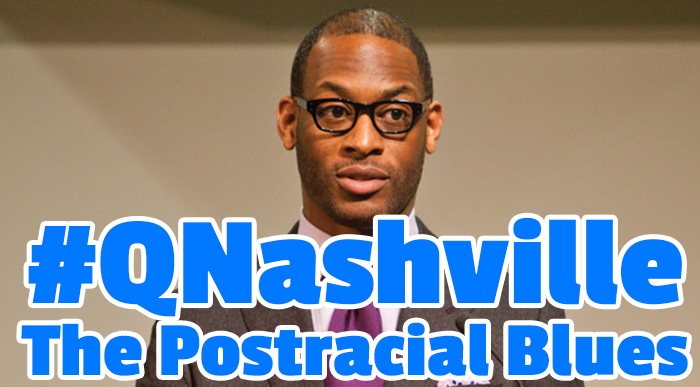
Don’t miss the StoryMen recap of #QNashville Day 1! Click here to listen.
 Are we really in a postracial culture? Are we truly a meritocracy where race doesn’t matter and affirmative action is irrelevant? No, we are not. And the “postracial” vocabulary is itself part of the problem.
Are we really in a postracial culture? Are we truly a meritocracy where race doesn’t matter and affirmative action is irrelevant? No, we are not. And the “postracial” vocabulary is itself part of the problem.It’s time to trouble the idea of “postracial”. Carter diagnoses it as a cultural sickness. The drive to be postracial is a refusal to mourn the loss of a society that’s been organized by a hierarchy of race and gender.
We refuse to mourn the loss of a society that ought not never have existed in the first place.
How do religion and Christianity function as midwives of the postracial blues? The Postracial Blues are the latest form of racism. Postracial is racism’s quest for an afterlife.
What does the Postracial mean? Some Axioms:
- The “post” in postracial signifies a formation that is temporally after but by no means over that to which it is affixed. (Now: things are undeniably better. But the question isn’t “Are the intentions of individuals in society better?” Yes they are.)
- We must move from the question “Are we living in a post-racial world” to “Are we living in a post-racist world?” Are the structures of our culture still racist? Yes they are. Look at our prison system. Our immigration policies. The disparities in healthcare and our geography-based educational outcomes. We’re not past racism at all.
- The postracial is racism’s afterlife, its quest for eternal life. This is why the idea of “racial reconciliation” is also problematic. It’s hierarchy structurally born again.
- The beginning of our pastoral task is to understand its special relationship to Christianity. The postracial is a kind of discipleship. We are disciplined into it. The racial is a faux reconciliation. This is ultimately cultural transubstantiation. It is the transubstantiation of malevolent racial intentions into benevolent structural hierarchies.
If that all seems confusing, consider how two superficially similar films illustrate the essential difference: Avatar and District 9.
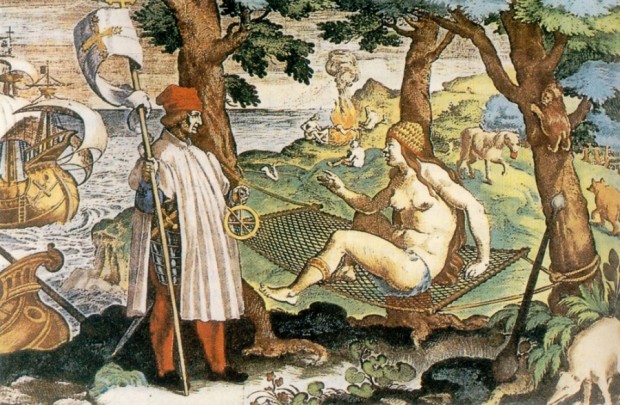
Avatar attempts to re-narrate modern colonialism and racism. This film attempt to move from malevolent intentions to benevolent structures.
So what narrative is being rewritten? The critical historical date is 1492. The key figure is Columbus. This was the moment “whiteness” was born. (There’s nothing natural about race. You can study it historically.)
Columbus was more than just a historical figure. He was a social type. As a social type, he never died. 5 years before Columbus (1487), Leonardo da Vinci forecast Columbus’ social type – the Vitruvian Man. He’s the perfect human being, perfectly balanced. This is the “proper” shape of the human.
The European ideal of the perfect human is contrasted with the non-White American in Jan Van der Straet’s 1575 painting America. The figure in front of the naked Amerindian woman is another social type: the religious image of the cross-topped-staff bleeds down into a sheathed sword. In his other hand is the astrolab (technological progress). He’s clothed with clothes, knowledge, war and religion. She, by contrast, is bear-breasted and has nothing.
The other icon that arose is the the God-Man: an image of Columbus that becomes identified with Christ. In this narrative, the European man becomes the God-bringer.
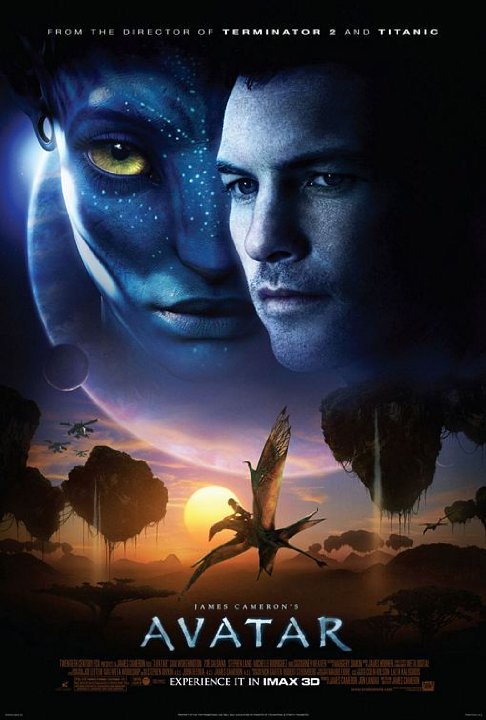 This is the formation of the analytics of race. Avatar remixes all of this.
This is the formation of the analytics of race. Avatar remixes all of this.
The key figure in the film is Jake Sully. He’s in a wheelchair. On this planet, they figured out how to take the body of a Nav’i, empty it of everything that’s Navi and fill it with a human (white) brain. In the film, Jake infiltrates the society, they decide to fight and Jake decides to fight for the Nav’i. Jake moves from malevolent colonialist to become a multi-culturalist. He becomes the savior in a Nav’i body.
Ultimately, however, Jake’s journey isn’t about the Nav’i. It’s a struggle between the two Columbus types: do we slash and burn or do we assimilate? In the end, the postracial wins.
This is postracial performance. It’s not about the Navi. It’s whether a repackaged whtie masculinity can redress itself up and do work.
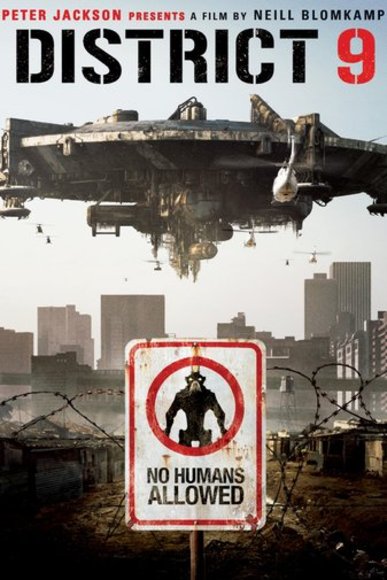 Now consider the very different message of District 9.
Now consider the very different message of District 9.
District 9 came out the same time as Avatar but got no love. It’s superficially a sci-fi commentary on Apartheid. The main character is a white man named Vickers. Vickers becomes contaminated by the Other, the Prawns. Over the course of the film, Vickers becomes one of them. He is transformed wholly into a Prawn.
By the end of the film, Vickers sees that his life is bound up in the fate of the Prawns. They give him salvation, not the other way around. Because he is totally transformed, he must wait for salvation with them. If he’s not saved, they’re not saved.
At the end of the film, another Prawn named Chris takes garbage from the Prawn ghetto and turns it into a flower while he waits for the mothership. He makes flowers where he is and waits for the return. This is a picture of the Church: we are an eschatological community making flowers out of garbage while we wait for the Return.
If Christians are truly to be postracist, we cannot live as rescuers. We must live as someone who needs to be rescued.
We must reframe: Privilege is actually underprivileged because it blinds us. We can see “underprivileged” as privilege – it’s a second sight that lets us see beauty in the garbage.
Ain’t nothing but garbage there. You can’t see the flower in that thing called trash. — J. Kameron Carter
What if what we mean by Church is not boxed up into our walls, but overflowing over the edge? We think we know what we’re talking about. But what if that liturgy has become empty word games?



